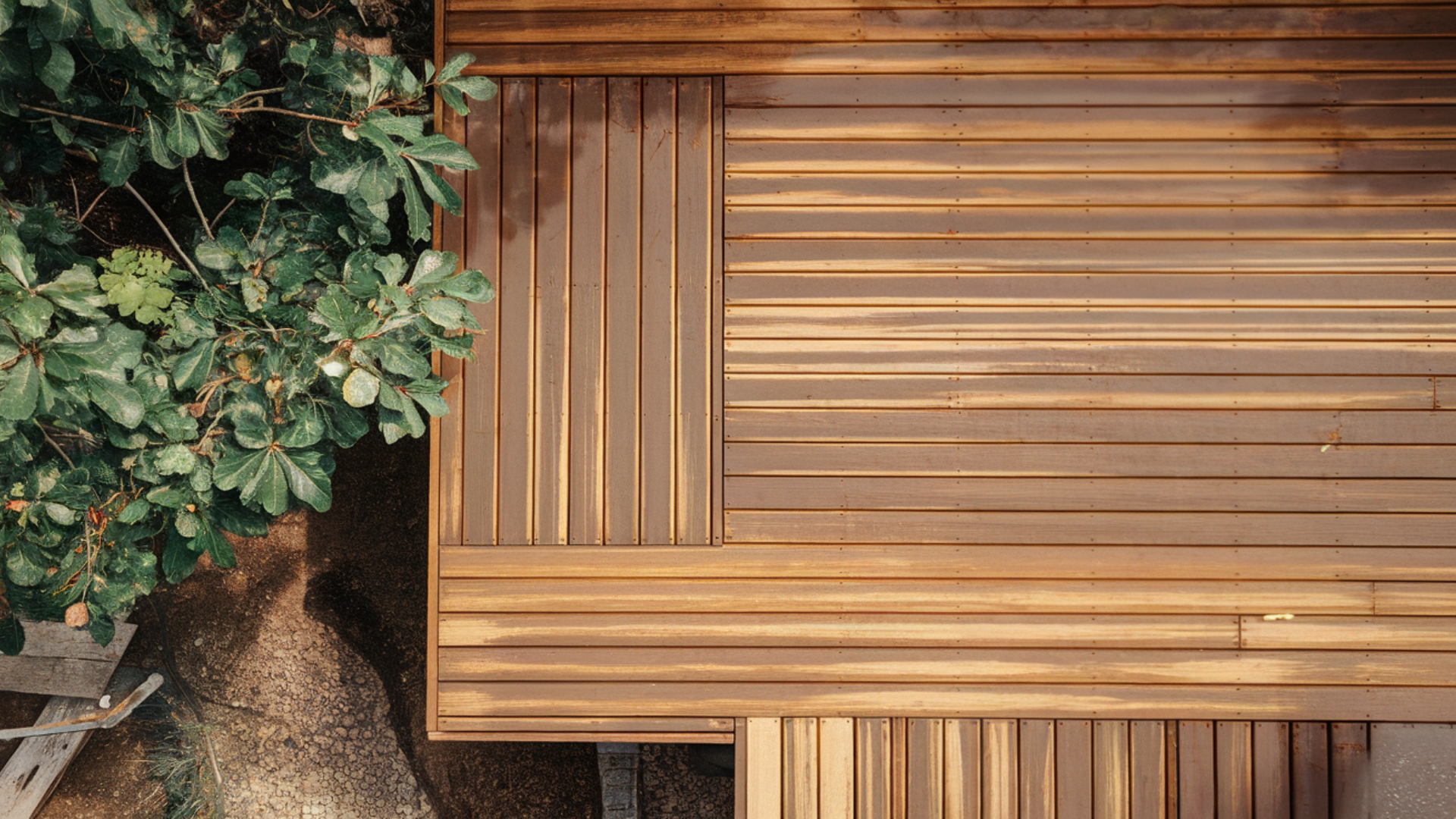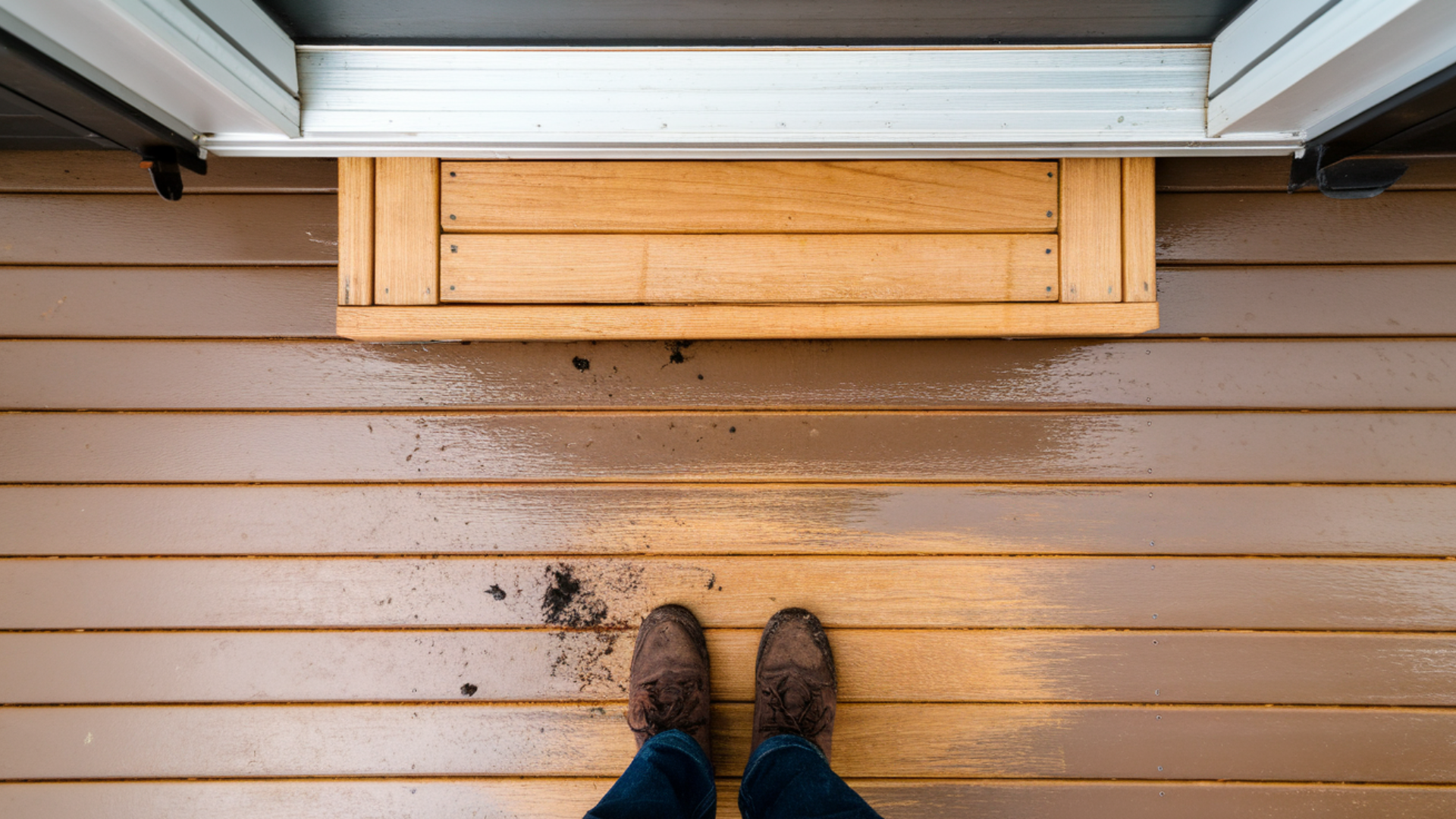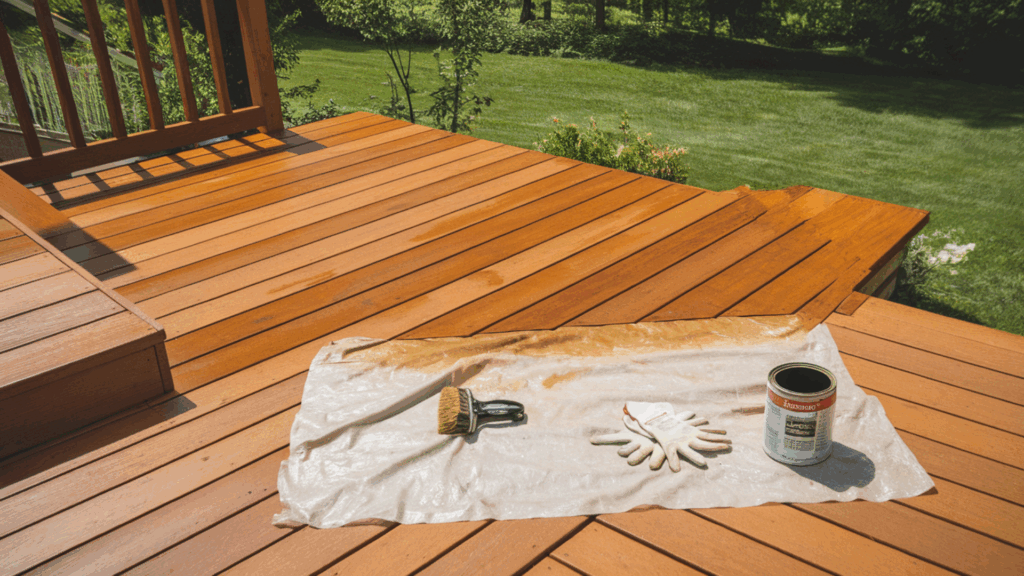If you’re wondering how long your deck stain will last, you’ve come to the right place. If your deck is brand new or in need of a refresh, this will help you plan and avoid costly damage.
Deck stain protects wood from sun, rain, and wear, but not all stains last the same. Some fade in a year, while others hold strong for up to five.
This will help you know the difference and keep your deck looking great and safe for years to come.
I will also cover what shortens or extends your stain’s life, like sun exposure, moisture, and even how often people walk on your deck.
If you’ve been searching for a simple, honest answer that tells you when to re-stain and why, this guide is made for you.
How Long Does Deck Stain Last?
Deck stain wears away over time. How long it lasts depends on the type you choose. Weather, sunlight, foot traffic, and how well the wood was prepared also affect the stain’s lifespan.
Transparent Stains

Transparent stains give the wood a light color while letting the grain fully show through. They offer the most natural look but the least protection.
Because of their low pigment, they don’t block much sunlight or moisture. You’ll usually need to reapply them every year. This stain works best on new or high-quality wood where you want the natural beauty to shine.
Semi-Transparent Stains

Semi-transparent stains offer a middle ground between color and visibility. They add more pigment than transparent stains, so they block more UV rays while still letting some wood grain show.
This type typically lasts 2 to 4 years, depending on weather and maintenance. They’re a good choice if you want both color and texture without fully covering the wood.
Solid Stains

Solid stains offer the most coverage and hide the grain completely. They soak into the wood like a stain but look more like paint.
These stains provide strong protection against the sun and moisture, making them ideal for older or heavily worn decks.
With proper care, solid stains last between 3 and 5 years, and they’re a good pick if you want to refresh or change the deck’s color completely.
Factors Affecting Stain Longevity
How long your deck stain lasts isn’t just about the product. Daily use, weather, and even the type of wood all play a role. Some areas fade faster than others. Knowing what affects stain life helps you plan for maintenance.
Sun Exposure

Direct sunlight breaks down stain over time. UV rays cause fading and can dry out the wood. Decks that face south or west tend to wear out faster because they get the most sun. Over time, the color dulls, and the wood may need re-staining sooner than shaded areas.
Moisture and Rain

Rain, snow, and humidity can wear down the stain. Water seeps into the wood, leading to peeling, warping, and even mold. If the stain isn’t sealed properly, moisture damage happens faster. Keeping the deck sealed helps reduce this wear and extends the stain’s life.
Foot Traffic

Areas with more foot traffic lose stain faster. Steps, walkways, and spots near doors often show signs of wear first. Dirt and shoes can rub off the stain and expose bare wood. These high-use zones may need touch-ups more often than the rest of the deck.
Wood Type

Different types of wood absorb stain differently. Hardwoods like teak or ipe are dense and may hold stain longer. Softwoods like pine or cedar soak in more stain but might fade or wear more quickly. Knowing your wood type helps you choose the right stain and care schedule.
Signs It’s Time to Re-stain
Stain won’t last forever. Over time, your deck will show signs that it needs attention. Watch for these changes so you can re-stain before damage gets worse.
Addressing these signs early helps prevent bigger repairs and keeps your deck looking and performing its best.
- Fading color or dull appearance: The stain starts to lose its color. The deck may look dry, gray, or weathered instead of rich and warm.
- Peeling or flaking stain: If the stain is peeling off, it’s no longer protecting the wood. This often means moisture has gotten underneath.
- Water no longer beads on the surface: When you pour water on the deck and it soaks in instead of beading up, the seal is gone. That’s a clear sign it needs restraining.
- Visible wood damage or mold: Look for soft spots, cracks, or dark patches. Mold, mildew, or rot mean the stain is no longer doing its job.
Extending the Life of Your Deck Stain
Good habits can help your deck stain last longer. Regular care keeps your deck looking fresh and protected. These steps don’t take much time but make a big difference. Here’s what helps most:
- Regular Cleaning: Clean your deck once a month to remove dirt, leaves, and debris. This prevents mold and mildew from forming, and a clean surface also prevents moisture from sitting on the wood for too long.
- Prompt Repairs: Fix any loose boards, nails, or cracks as soon as you notice them. Damaged spots let water seep in, which can lead to rot and faster stain breakdown. Small repairs now prevent bigger problems later.
- Apply a Maintenance Coat: Don’t wait until the stain is fully gone. Apply a light maintenance coat every 2 to 3 years to refresh protection and color. It’s quicker and easier than a full re-stain.
Cost of Delaying Re-staining
Postponing restraining may appear minor, but it can lead to serious and expensive problems. Once the stain wears off, your deck becomes vulnerable to environmental wear. Sunlight, rainfall, snow, and regular use rapidly deteriorate exposed wood.
Gradually, this exposure causes the boards to fade, crack, bend, or decay. Moisture can infiltrate, promoting the growth of mold and mildew. What starts as a routine upkeep task can evolve into costly repairs or even the need for full deck reconstruction.
Replacing damaged boards or rebuilding a deteriorated deck costs significantly more than staying on schedule with re-staining. A gallon of stain may cost $30–50, whereas major structural repairs can run into the hundreds or even thousands of dollars.
Keeping up with re-staining isn’t merely about maintaining appearance—it’s about safeguarding your investment and preventing higher expenses over time.
Planning for a Deck Build or Update
If you’re preparing to build a new deck or refresh an existing one, early planning is essential for ensuring it stands the test of time. One of the most crucial choices you’ll need to make is selecting the appropriate stain.
The type of stain impacts not only the appearance of your deck but also how well it withstands exposure to the elements. Knowing how long different stains typically last can help you manage your budget effectively and avoid unnecessary maintenance or repairs.
With the right product and thoughtful preparation, you can extend your deck’s durability and maintain its appeal for years to come.
Choosing the Right Stain for Your Deck’s Needs
When it’s time to stain your deck, picking the right type isn’t just about color—it’s about performance. The amount of sunlight your deck gets, how often it’s used, and how much of the natural wood you want to show all affect your choice.
Using the right stain helps protect your deck from wear and weather and makes maintenance easier in the long run. Below are three common scenarios to help you choose the stain that best fits your deck’s conditions.
1. High Sun Exposure
Decks that get full sun every day can quickly fade and dry out. For these sunny spots, a solid stain is your best bet. It offers the most UV protection and creates a rich, even color across your deck.
Solid stains also effectively hide imperfections, making them ideal for older decks or wood that has weathered over time. If you want long-lasting color and coverage with maximum protection, solid stains are the most reliable choice.
2. Shaded or Low-Traffic Areas
If your deck sits in a shady area or doesn’t get much foot traffic, a semi-transparent stain can be a great option. This type of stain allows some of the wood grain to show through while still adding a hint of color and protection.
It strikes a balance between aesthetic appeal and durability, making it perfect for newer decks or those that don’t receive much daily use. Semi-transparent stains generally last longer than clear ones and give your deck a more natural look.
3. Show Off the Wood Grain
If your main goal is to showcase the natural beauty of your deck’s wood, go with a clear or transparent stain. These stains offer the most visibility for the wood grain, giving a fresh, raw look that many homeowners love.
However, clear stains offer minimal protection against UV rays and tend to wear out faster, especially in sunny areas. That means you’ll likely need to reapply them more often, sometimes annually.
Conclusion
The lifespan of deck stain typically ranges from 1 to 5 years, depending on the type of stain, exposure to the elements, and how well the deck is maintained.
Transparent stains may need reapplication every year, while semi-transparent or solid stains can last longer, sometimes up to five years. However, even the best stain won’t last without proper care.
Regular cleaning, prompt repairs, and occasional reapplication help maintain the stain’s protective and visual appeal. Choosing the right stain for your specific wood type and climate also plays a big role in how long it lasts.
Look for high-quality products and follow the manufacturer’s instructions closely. In short, the key to long-lasting deck stain lies in a combination of the right product and routine upkeep. With care, your deck can remain in good condition and protected year after year.

